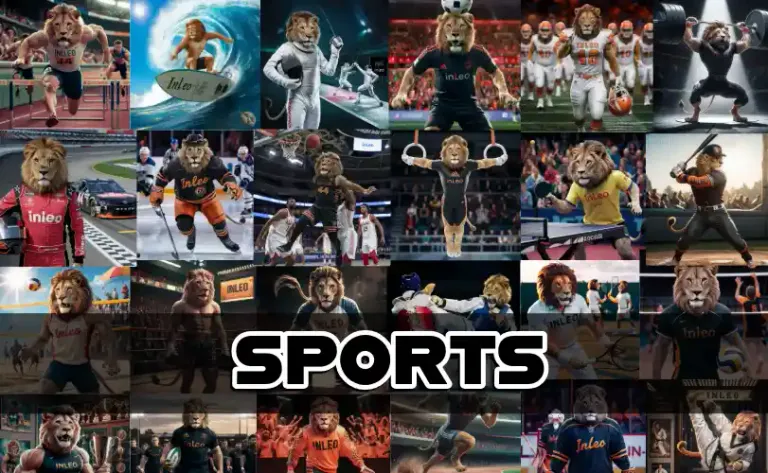Welcome to the daily sports #threadcast! Here we will discuss, follow and share all the news from the sporting world.
We want to make #inleo the premier destination for the #sports community by establishing the Leo platform as the hub for sports updates
Edition #154
December 11

Almada anuncia saída do Botafogo: "Quando vim, tinha tudo certo para ficar seis meses"
O meia argentino Thiago Almada não segue no Botafogo para a temporada 2025. O jogador afirmou, após a derrota para o Pachuca por 3 a 0 nas quartas de final, que vai para o Lyon após a eliminação na Copa Intercontinental.
#sports #botafogo
Thiago chegou ao clube no meio do ano como a contratação mais cara da história do futebol brasileiro. John Textor, dono da SAF, investiu 25 milhões de dólares para tirar o campeão mundial do Atlanta United, dos Estados Unidos.
Já na chegada, o empresário americano afirmou que há previsto no contrato do jogador a transferência para o Lyon, da França, que pertence também a Textor, no começo de 2025. Na única partida dos botafoguenses no Intercontinental, o meia começou no banco de reservas.
Canal ESPN
#sports
!summarize
!summarize
!summarize
!summarize
!summarize
!summarize
!summarize
!summarize
c
!summarize
!summarize
!summarize
!summarize
!summarize
!summarize
!summarize #maxfriend #mlb #baseball #nyyankees
!summarize #cincinnati #bengals #nfl
!summarize #maxfried #nyyankees #mlb
!summarize #nyknicks #karlanthonytowns #nba
!summarize #nymets #jesusbaez #baseball
!summarize #unc #billbelichick #coaching #football #ncaa
!summarize #loumerloni #redsox #boston #mlb #corbinburnes
!summarize #nymets #mlb
!summarize #timlincecum #sfgiants #mlb
!summarize #mlb #nyyankees #houston #astros #tucker
!summarize #whitesox #mlb #chicago #baseball
!summarize #nba #lebronjame #mikewilbon
!summarize #nymets #garrettcrochet #whitesox #mlb
!summarize #mlb #orioles #baltimore
!summarize #mlb #nyyankees #kyletucker #houston #astros
!summarize #maxfried #nyyankees #baltimore #orioles #mlb
!summarize #toronto #bluejays #mlb #freeagency
!summarize #nyyankees #kyletucker #juansoto #houston #astros #mlb
!summarize #mlb #commissioner #robmanfred #baseball #tampa #rays
A's Reportedly Made Effort To Sign Max Fried
One of the top free agents came off the board this week when the Yankees and Max Fried agreed to a stunning eight-year, $218MM deal. Clubs like the Blue Jays and Red Sox were also known to be in the involved but Bob Nightengale of USA Today (X link) reports that the Athletics were “one of the most aggressive teams” in the bidding.
Many fans might roll their eyes at the idea of the A’s getting anywhere near a free agent of this caliber, which would be an understandable position to take. As of a couple of weeks ago, they had never given a free agent more than the $36MM they gave to Yoenis Céspedes back in 2012. They recently broke that record by giving Luis Severino $67MM, a huge jump for them but still relatively modest by league-wide standards and well below the deal that Fried got.
#maxfried #as #mlb #nyyankees
But the A’s have to spend some money somewhere. It was reported this week that the club may need to get its competitive balance tax number up to the $105MM range in order to avoid a grievance from the MLBPA.
That perhaps explains all the recent smoke about an upcoming payroll bump. MLBTR took a detailed look at the A’s last month, in a reporting that references reporting going back to January which hinted at a potential for greater spending. Since then, the A’s have ramped things up with the aforementioned Severino signing. They also reportedly made a strong offer to Sean Manaea, who remains unsigned.
!summarize #nymets #garrettcrochet #mlb #whitesox #chicago
!summarize #markgastineau #brettfarve #nfl
!summarize #garrettcrochet #nymets #chicago #whitesox
!summarize #nygiants #nfl #briandaboll #coach
!summarize #kyletucker #maxfried #mlb #kenrosenthal
!summarize #redsox #boston #gerrettcrochet #mlb
!summarize #mikefrancesa #sports
!summarize #nyyankees #mlb #briancashman
!summarize #college #football #bowl
!summarize #boston #redsox #garrettcrochet #chicago #whitesox #mlb
!summarize #mlb #kyletucker #houston #astros #nyyankees
!summarize #kyletucker #nyyankees #mlb #houston #astros
!summarize #garrettcrochet #whitesox #chicago #redsox #boston
!summarize #sports #college #players #paying
!summarize #nyyankees #juansoto #mlb
!summarize #as #moneyball #mlb
!summarize #nba #ratings
!summarize #maxfried #andresgiminez #guardians #nyyankees #cleveland #mlb
!summarize #michigan #ohio #richeisen #law
!summarize #redsox #garrettcrochet #mlb #boston #chicago #whitesox
!summarize #nba #sport
!summarize #nyyankees #mlb #nymets
!summarize #nfl #rankings
Pete Alonso's free agency market heating up after Juan Soto's massive Mets deal
Pete Alonso is meeting with teams as he assesses his market, following the removal of the top free agent bat from the board last weekend.
Scott Boras declined to directly address his client Juan Soto’s historic 15-year, $765 million contract — the deal was still pending the completion of a physical on Wednesday — but acknowledged at the Winter Meetings the domino effect of the All-Star outfielder’s decision.
“A lot of market locomotion regarding Pete, the Polar Bear Express is rolling,” Boras said. “Power in this game is such a commodity and you can see as we filter through the market the availability of power is something most teams recognize as a core lineup need.”
#petealonso #mlb #freeagency #scottboras
Alonso, 30, finished with a career-low for homers in a full season with 34 this year, but remains among the best pure power hitters on the market. Earlier this week, Mets president of baseball operations David Stearns said the team is interested in re-signing Alonso.
Finding common ground on a contract is the challenge.
“He is open to meeting with a lot of teams and obviously he has been doing so,” Boras said. “Certainly his experiences with the Mets were extraordinary both for them and him.”
!summarize #sandiego #padres #mlb
!summarize #clayholmes #nymets #mlb
!summarize #sandiego #padres #mlb #rokisasaki